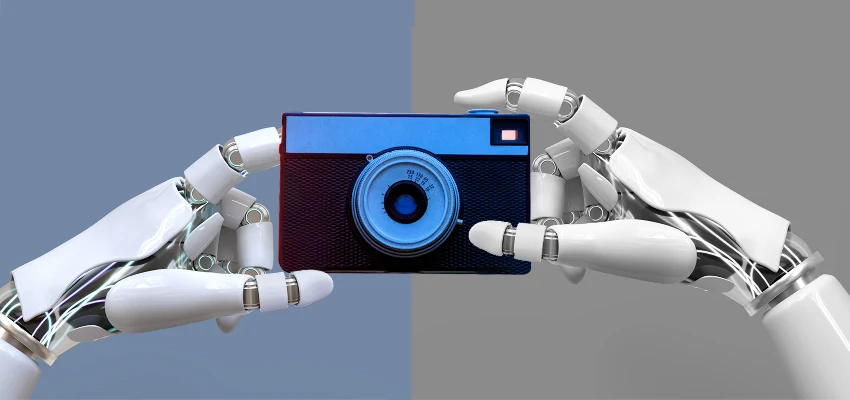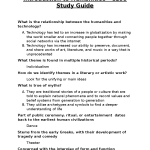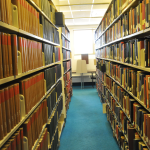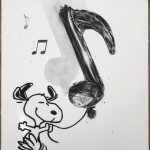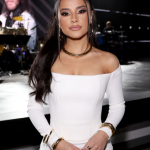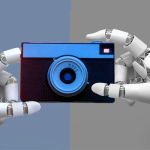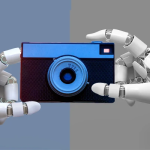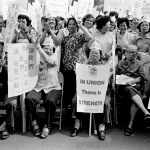AI in photojournalism is revolutionizing the way we document and preserve our visual history, bridging traditional storytelling with cutting-edge technology. As the digital landscape evolves, professionals like Kira Pollack are at the forefront, exploring how artificial intelligence can safeguard the invaluable photography archives that capture pivotal moments in time. Although there are legitimate concerns surrounding AI’s potential to undermine trust in authentic imagery, there is also a burgeoning opportunity for this technology to enhance visual storytelling. With AI’s ability to analyze complex images and provide context, it holds promise for enriching the narratives behind the photographs that once seemed forgotten. As photojournalism faces unprecedented challenges, leveraging AI could be the key to ensuring that the art of capturing reality not only survives but thrives in the future.
The intersection of technology and visual journalism has opened new avenues for innovation in the field. With the rise of machine learning and intelligent systems, the role of photography in media is evolving in ways that challenge traditional norms. Influential figures in photography, like Kira Pollack, are advocating for harnessing technological advancements to secure the legacy of historical images and footage. This shift highlights the importance of maintaining comprehensive records during times of rapid change, ensuring that the essence of visual documentation remains intact. As discussions around digital ethics and authorship grow, the potential of utilizing artificial intelligence in this sphere offers a promising landscape for enhancing the robustness of photojournalism.
The Challenge of AI in Photojournalism
Artificial intelligence has ushered in a new era for photojournalism, presenting both significant challenges and unique opportunities for the industry. While the threat of AI-generated images raises concerns about authenticity and ownership, it also prompts conversations about the ways new technology can support the preservation of historical visual narratives. Photographers, especially those who have documented critical global events, are increasingly wary of how these new tools might distort public perception and undermine trust in visual storytelling, which has always been a cornerstone of journalism.
Despite these challenges, leading figures in photojournalism like Kira Pollack are advocating for a proactive approach to AI integration. By recognizing that this technology can help to document and archive the immense body of work produced by photojournalists, Pollack is exploring ways to employ AI ethically. This involves ensuring that photographers’ legacies and the integrity of their imagery are safeguarded while facilitating easier access to these valuable archives. As AI continues to redefine the landscape of photography, photojournalists must engage critically with these advancements to protect the authenticity of their visual stories.
Impact of AI on Photography Archives
The preservation of photography archives stands as a fundamental concern in the age of artificial intelligence. Archive collections hold immense cultural and historical value, yet many images remain unseen and underappreciated. Kira Pollack highlights that the majority of a photojournalist’s work—estimated at around 95 percent—often goes unpublished, leading to a loss of vital narratives that could inform future generations. By utilizing AI tools, there is potential not only to catalog and organize these photographs but also to breathe new life into them, ensuring they are accessible for educational and storytelling purposes.
Furthermore, Pollack’s work is exploring how AI can help frame the stories behind images, emphasizing the photographer’s intent and the context within which they were created. This could enhance the viewer’s understanding of visual narratives, bridging the gap between the historical significance of these archives and contemporary audiences. Ultimately, the integration of AI technologies may foster a more interactive and engaging experience, allowing people to connect with the past in a meaningful way.
Navigating Trust and Authenticity in Visual Storytelling
In a world where misinformation proliferates, maintaining trust in visual storytelling is paramount for photojournalists. As Pollack indicates, the rise of sophisticated AI-generated imagery presents a dual-edged sword. On one hand, the ability to create convincing yet fabricated visuals raises fears of eroded credibility; on the other, AI offers tools that can help authenticate and protect the integrity of real journalism. Finding a balance between these contrasting dynamics is crucial for the future of photojournalism.
Pollack envisions using AI responsibly to reinforce public trust by focusing on the preservation of authentic journalism rather than the creation of synthetic content. Her research emphasizes the importance of honesty in visual communication, ensuring that AI acts as an ally to photojournalists in their quest for truth. By prioritizing ethical considerations in the deployment of AI, the photojournalism community can navigate these complex waters, reinforcing the values that underpin visual storytelling.
Kira Pollack’s Vision for AI in Photojournalism
Kira Pollack’s work at the Shorenstein Center reflects a thoughtful exploration of how artificial intelligence can be harnessed to benefit the field of photojournalism. Her unique perspective as an Emmy award-winning visual storyteller gives her a critical lens through which she views technological advancement. By advocating for the thoughtful integration of AI, Pollack is working to ensure that the core values of truth, authorship, and memory remain central to the evolution of photography.
Through her fellowship, Pollack aims to engage in interdisciplinary dialogues that can shed light on the larger implications of AI for journalism. Her objective is not merely to adapt to changes but to actively shape the future landscape of photojournalism in a way that reinforces its integrity and relevance. By promoting a culture of innovation that respects the artistry of visual storytelling, Pollack seeks to empower photojournalists and help them navigate the complexities introduced by technology.
The Role of AI in Visual Storytelling
Artificial intelligence is rapidly transforming the landscape of visual storytelling, and its role in this creative process is complex and evolving. As Kira Pollack has noted, while AI presents challenges to traditional photography, it also unlocks new avenues for creativity and expression. The ability for AI to analyze and interpret vast collections of images can provide fresh insights and narratives that may have been overlooked, enriching our understanding of historical events.
Moreover, AI can enhance the storytelling potential of photography by enabling more dynamic and interactive experiences for audiences. By utilizing AI to enhance the contextual information provided for each image, photojournalists can create a more immersive narrative that draws viewers into the experiences being depicted. As technology continues to advance, the collaboration between human creativity and AI will likely redefine the boundaries of visual storytelling, making it more engaging and accessible.
Ethical Considerations in AI-Driven Photojournalism
While the promise of AI in photography is enticing, it brings ethical considerations that must be addressed diligently. The potential for copyright infringement—where photographers’ works are scraped to train AI systems without consent—raises urgent questions about ownership and fair use. Kira Pollack’s commitment to ethically deploying AI in the context of photojournalism emphasizes the need for frameworks that protect the rights and legacies of photographers while allowing for innovation.
Additionally, the ethical implications of using AI to generate images must be examined against the backdrop of maintaining truth and authenticity in journalism. Pollack’s work advocates for creating responsible practices that not only enhance the preservation of archives but also uphold the integrity of visual journalism itself. As technologies evolve, the photojournalism community must engage collaboratively to form ethical guidelines that align with the core principles of truth-telling and accountability.
Future Directions for AI in Photojournalism
Looking ahead, the intersection of AI technology and photojournalism presents vast opportunities for growth and innovation. Pollack’s research explores how photojournalists can effectively harness AI tools to manage their extensive archives, ensuring that vital stories are not lost in the ether of digital advancements. By shifting how photo archives are organized and accessed, AI can potentially facilitate a renaissance in how these important images inform public discourse.
Moreover, the future of photojournalism will depend on a collaborative approach where photographers, technologists, and ethicists work together to establish best practices for using AI. By embracing a forward-thinking mindset, the photojournalism community can lay the groundwork for a sustainable future where technology serves to amplify real stories rather than compromise their authenticity. In this way, the evolution of AI can be seen not just as a challenge but as an opportunity for reinvention and resilience in visual storytelling.
Engaging with Communities Through AI
As AI technologies develop, there is an ever-pressing need for photojournalists to engage with their communities and audiences in meaningful ways. Kira Pollack emphasizes the importance of making archives accessible, not just to researchers and journalists, but to the general public. By utilizing AI to create interactive platforms, people can engage more intimately with the historical narratives that shape our world, thereby fostering a shared understanding of collective experiences.
Moreover, community engagement can further enrich the storytelling aspect of photography. Public access to archives and AI-enhanced visual content can lead to crowdsourcing narratives, where individuals share personal stories connected to the images. This collaborative approach can deepen the context of photojournalism, ensuring that it resonates across generations and cultures, thus reinforcing the relevance of visual storytelling in contemporary society.
Kira Pollack’s Contributions to the Future of Photojournalism
Kira Pollack’s contributions to the future of photojournalism are shaping how the industry navigates the complexities of artificial intelligence. By focusing on the preservation of archives and the ethical use of AI, Pollack is ensuring that the visual history captured by photojournalists is not only preserved but also enhanced for future generations. Her leadership inspires a critical examination of how new technologies can align with the core values of photography, ultimately benefiting both creators and audiences.
Her ongoing research at the Shorenstein Center seeks to bridge the gap between technology and journalism, offering insights that can guide photojournalists as they adapt to an increasingly digital landscape. As Pollack continues to advocate for innovation grounded in ethical principles, the impact of her work may very well define the trajectory of photojournalism in the age of artificial intelligence.
Frequently Asked Questions
How is AI affecting the field of photojournalism?
Artificial intelligence is impacting photojournalism in multiple ways, including the risk of copyright violations and the emergence of synthetic images that can blur the lines of authenticity. However, experts like Kira Pollack believe AI can also play a role in preserving the visual history recorded by photojournalists, helping to maintain the integrity of their archives and improve access to their work.
What role does Kira Pollack see AI playing in preserving photography archives?
Kira Pollack is exploring the potential of AI to catalog and organize the vast archives of photojournalists. She aims to use AI technologies to make these archives more accessible and to preserve the narrative and intent behind the images, ensuring that the historical significance of photojournalism is maintained.
Can AI help enhance visual storytelling in photojournalism?
Yes, AI has the potential to enhance visual storytelling in photojournalism by providing detailed analyses of images. For instance, AI can help interpret complex scenes in conflict photography, capturing the emotions and actions within a photo that might be overlooked, thus enriching the narrative presented to the audience.
What are the ethical concerns surrounding AI in photojournalism?
The ethical concerns surrounding AI in photojournalism include issues of authorship and ownership, as AI technologies may inadvertently scrape photographers’ work without consent for training models. Additionally, the rise of AI-generated images raises questions about the erosion of trust in visual media and the need for safeguards to maintain authenticity.
How can AI improve the accessibility of photojournalism archives?
AI can improve accessibility by automating the cataloging and organization of extensive photojournalism archives, allowing for better discovery of images. This technology can provide context and insights that may be hidden, helping to ensure that the stories behind the images are easily retrievable and understood.
What is the relationship between AI and visual truth in photojournalism?
Kira Pollack advocates for using AI to reinforce visual truth in photojournalism rather than to replace it. This means utilizing AI to help protect and preserve authentic images and ensuring that the work of photojournalists is represented accurately, maintaining the values of truth and authorship in visual storytelling.
What challenges are faced by photojournalists due to AI advancements?
Photojournalists face challenges posed by AI, such as the risk of losing ownership of their work through unauthorized use in AI training and the proliferation of fake images that could undermine public trust in real journalism. Addressing these challenges is vital to safeguarding the integrity of the profession.
How does generative AI pose a threat to photojournalism?
Generative AI creates photorealistic images without the need for traditional photography, which can lead to misinformation and a decline in trust for genuine photojournalism. As images spread rapidly on social media, distinguishing real photography from AI-generated content becomes increasingly difficult.
What is Kira Pollack’s approach to integrating AI with photojournalism?
Kira Pollack’s approach involves understanding the capabilities and limitations of AI to harness its potential for good within photojournalism. She focuses on using AI for the critical tasks of preserving and organizing photography archives while ensuring that ethical standards and the intent of the photographers are upheld.
What future does Kira Pollack envision for AI in photojournalism?
Kira Pollack envisions a future where AI is used responsibly to enhance the practice of photojournalism by providing tools for preservation, contextualization, and storytelling without compromising the authenticity and values of the profession. Her work aims to spark discussions on how technology can serve the core ideals of journalism.
| Key Points |
|---|
| Kira Pollack is researching how AI can preserve photojournalism archives, which are at risk due to copyright issues and the rise of synthetic imagery. |
| AI presents an opportunity to understand and protect visual history rather than distort it, encouraging an ethical approach to AI in journalism. |
| The project involves collaboration with photojournalists to assess the capabilities of AI in recognizing and cataloging complex visual narratives from archives. |
| Pollack aims to champion conversations around the ethical usage of AI, emphasizing the importance of trust and integrity within photography. |
| The ultimate goal is to find ways to maintain the core values of photography: truth, authorship, and memory through AI’s assistance. |
Summary
AI in photojournalism is a pivotal topic as it presents both challenges and solutions for the field. Kira Pollack’s work highlights the potential of artificial intelligence not only to threaten photojournalism through issues like copyright infringement and trust erosion but also to help protect vital visual histories. By leveraging AI technology, photojournalists can preserve their archives, ensuring that the stories behind the images are not only saved but also made accessible. Through collaborations and in-depth research, Pollack seeks to harness AI’s capabilities to reinforce the importance of truthful representation in photography, arguing that AI can be a powerful ally in safeguarding the integrity of the visual narrative.
